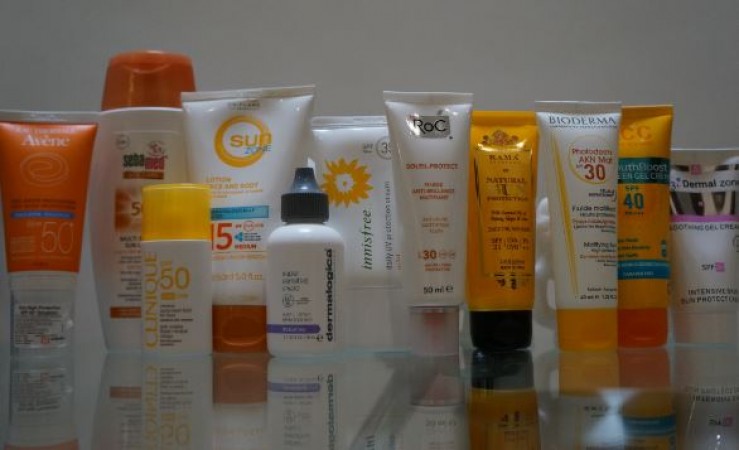
When it comes to protecting our skin from harmful UV rays, sunscreen is a vital tool in our arsenal. However, knowing exactly when and how to apply sunscreen can make a significant difference in its effectiveness. In this article, we will delve into the best practices for applying sunscreen for optimal sun protection, ensuring that you can enjoy the great outdoors while safeguarding your skin.
1. Understanding the Importance of Sunscreen
Before diving into the specifics of when to apply sunscreen, it is crucial to understand why sunscreen is so essential. Sunscreen protects our skin from the harmful effects of ultraviolet (UV) radiation, which can lead to sunburn, premature aging, and even skin cancer. By creating a barrier on the skin, sunscreen reflects or absorbs these harmful rays, shielding our skin cells from damage.
2. The Ideal Time to Apply Sunscreen
The timing of sunscreen application can significantly impact its effectiveness. For the best protection, it is recommended to apply sunscreen at least 30 minutes before sun exposure. This allows the sunscreen to fully bind to the skin and provides a more even layer of protection.
3. Reapplication Is Key
Applying sunscreen once is not enough to guarantee all-day protection. To maintain its effectiveness, it is crucial to reapply sunscreen regularly. The recommended interval for reapplication is every two hours, or more frequently if you have been swimming, sweating heavily, or toweling off.
4. Don't Forget These Areas
People often overlook certain areas of the body when applying sunscreen, leading to uneven protection. Be sure to apply sunscreen to commonly neglected areas, such as the ears, back of the neck, tops of the feet, and hands. Additionally, using lip balm with SPF protection will help shield your lips from the sun's harmful rays.
5. Sunscreen and Makeup
If you wear makeup, you might wonder about the order of application for sunscreen and other products. The general rule of thumb is to apply sunscreen first, let it absorb, and then proceed with your makeup routine. Some makeup products also contain SPF, but relying solely on them for sun protection may not be sufficient.
6. Sunscreen for Different Activities
The level of sun protection required can vary depending on your activities. For instance, if you plan to swim or engage in water sports, opt for a water-resistant sunscreen. When exercising or playing sports outdoors, consider a sport-specific sunscreen that offers sweat resistance.
7. Sunscreen and Cloudy Days
Even on cloudy days, UV rays can still penetrate the clouds and cause damage to your skin. Therefore, it is essential to apply sunscreen even when the sun is not shining brightly.
8. Sunscreen and Shade
While seeking shade is a good way to reduce sun exposure, it does not guarantee full protection. UV rays can bounce off surfaces and reach shaded areas. So, even if you're under an umbrella or tree, applying sunscreen remains essential.
9. Sunscreen and Peak Hours
The sun's rays are strongest during certain hours, typically between 10 a.m. and 4 p.m. During these peak hours, it's crucial to take extra precautions, such as wearing protective clothing and reapplying sunscreen more frequently.
10. Sunscreen for All Skin Types
People with different skin types require varying levels of sun protection. Those with fair skin, in particular, are more susceptible to sunburn and should use a higher SPF sunscreen. However, regardless of skin type, sunscreen should be a part of everyone's daily routine.
11. The Role of Clothing and Accessories
In addition to sunscreen, clothing and accessories play a significant role in sun protection. Wearing wide-brimmed hats, UV-blocking sunglasses, and protective clothing can further shield your skin from harmful UV rays.
12. Sunscreen for Children
Children have sensitive skin that requires extra care. It's crucial to use sunscreens specifically formulated for kids and to apply it generously and frequently. Additionally, encourage them to wear protective clothing and avoid direct sun exposure during peak hours.
13. The Environmental Impact of Sunscreen
While sunscreen is essential for protecting our skin, certain chemicals commonly found in sunscreen can harm the environment, particularly marine life. Look for reef-friendly or mineral-based sunscreens to reduce your impact on the environment.
14. The Importance of Year-Round Sunscreen Use
Sunscreen should not be reserved solely for beach vacations or sunny days. UV rays are present year-round, even during colder months. Make applying sunscreen a daily habit to safeguard your skin continuously.
When it comes to sun protection, knowledge and proper application of sunscreen are vital. By understanding the ideal timing, reapplication, and additional measures to take, you can protect your skin effectively from the harmful effects of UV rays. Embrace the outdoors with confidence, armed with the right sunscreen and a commitment to sun-safe practices.
Khalsa Diwan Sikh Temple in Hong Kong: Preserving Sikh Heritage in the Far East